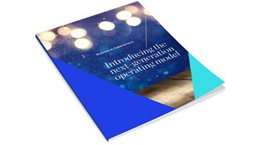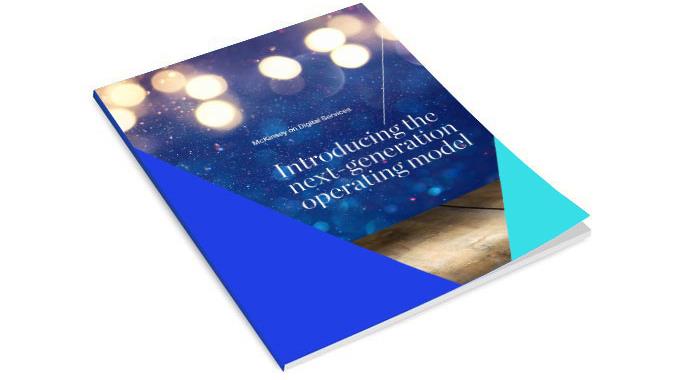In recent years, the business landscape has undergone massive changes thanks to shifting economic conditions, heightened customer expectations, and technological innovation. This reality has put additional pressure on businesses to improve performance and redesign their products, services, and even organizations. Zero-based design has emerged as a potent approach.
Stay current on your favorite topics
If done right, the principles of zero-based design—which essentially encourages people to cast aside assumptions to expand the scope of discovery—will help organizations achieve step changes in performance compared with traditional approaches. Typical results include an increase of 30 to 50 percent in operational productivity and a rise of 10 to 20 points in customer-satisfaction scores, fueled by enhanced responsiveness of up to 80 percent.
Given that impact, many organizations in the financial-services industry have tried to use zero-based design to transform customer journeys. But in practice, those efforts have often fallen short of their full value potential because organizations tend to narrowly define what zero-based design actually is. For this reason, they do not put in place the necessary building blocks so that great ideas lead to great solutions.
In our experience, four issues are the primary culprits: incomplete or unclear definitions of end-to-end journeys (both customer facing and internal), lack of the right skill sets on the journey-redesign team, constrained ideation, and regimented and inflexible ways of working.
To address these issues, we find it helpful to ask the following questions.
Would you like to learn more about Digital McKinsey?
1. Are all processes in your organization mapped against end-to-end customer journeys?
Companies often believe they’ve worked across departments to define end-to-end customer journeys by assembling members of different departments or aligning the organization to resolve a single pain point. This approach, however, doesn’t provide the necessary clarity needed to define an end-to-end journey. What’s needed is for companies to identify and reframe all processes throughout the organization into a comprehensive set of end-to-end journeys. This means accounting for processes that directly touch the customer as well as the supporting middle- and back-office functions. This is crucial because it is important to have the right definition of journeys to which the zero-based design approach can be applied. Otherwise, companies will risk delivering incomplete and inconsistent experiences to their customers.
A good journey definition includes the following:
- Places the customer at the center and uses the customer’s language. Taking this perspective will help the journey team work with the customer in mind. For example, an insurance sales customer’s journey definition might be, “I want to protect myself from the unexpected.”
- Identifies a clear beginning and end. Defining the outlines of the customer journey will force the team to think holistically about the customer experience instead of trying to arrive at point-by-point solutions. In insurance, a sales journey may start when a customer begins to evaluate options and end when he or she receives the policy.
- Crosses departmental boundaries. By considering the multiple functional groups that touch the customer journey, teams can solve for the customer’s integrated experience. In the insurance sales example, the journey will involve a minimum of the sales, pricing, policy-issuance, and even claims departments.
To define a set of end-to-end customer journeys, teams will need to invest significant effort and apply the right resources and capabilities, such as analytics and workforce management. When properly done, the outcome will be unprecedented visibility into every aspect of the customer journey. For example, a personal lines property-and-casualty (P&C) carrier defining its end-to-end journeys would quickly realize that a customer who has been in an accident and is now recovering from an injury and getting his or her vehicle repaired would perceive that entire experience as a single journey. Therefore, even if the carrier’s claims organization separates the vehicle-damage and injury adjustors into two different groups, they will need to come together to redesign the claims-customer journey.
2. Do you have people with diverse skill sets on your journey-redesign teams?
Many organizations bring together IT employees and business experts to redesign customer journeys. This collaboration helps, but it is not enough.
The success of a zero-based design effort depends on the journey team having a mix of skill sets to help generate ideas, create prototypes, test them, and then iterate on them. Following are two nontraditional but critical roles that need to be part of those teams:
- Experienced designers are adept at interpreting multiple stakeholder perspectives and translating them into an optimized possible journey design for the customer.
- Customer anthropologists can help the team understand customer insights more deeply. They interpret quantitative and qualitative research data and reconcile nonintuitive inputs to form a coherent narrative around the customer experience.
Financial-services firms and traditional organizations don’t necessarily have such nontraditional skills in-house. When they do exist, the skills can vary significantly, and attracting the right external talent is a challenge. Companies that are serious about pursuing zero-based design must invest in updated, innovative recruiting strategies to identify, hire, and develop employees with the right skill sets for these nontraditional roles.

Introducing the next-generation operating model
3. Are your ideation sessions sparking true innovation or derivative ideas?
Many proactive organizations are learning the basics of design thinking and ideation sessions. Companies often start with inspiring videos, integrate customer perspectives into ideation sessions, and include subject-matter experts in them as well.
While these steps are an important start, they don’t maximize the potential of zero-based design. An “art of the possible” approach can amplify creative thinking by releasing participants from constraints and inspiring them with possibilities.1 An effective ideation session should include four critical elements (for more, see sidebar, “Applying the ‘art of the possible’ with ideation sessions”):
- A clear, bold aspiration in line with the company’s overall strategy. Members of the ideation team must have complete clarity on the company’s overall vision, strategy, and goals (both financial and nonfinancial) that they are addressing. To achieve this clarity, senior leaders must be present at ideation sessions to articulate and credibly communicate the vision.
- Inspiration from outside innovators. Cross-functional teams that are exposed to examples of creative thinking in action from other sectors are more likely to challenge their own insular thinking and produce creative ideas.
- Next-generation capabilities. Zero-based design participants who become familiar with new capabilities such as automation, advanced analytics, and digital are better able to make connections between potential innovative solutions and existing business problems. As a result, “art of the possible” workshops frequently incorporate overviews of advanced capabilities and other relevant educational programming.
- Ideation in rapid sprints. All zero-based design sessions require team members to brainstorm. However, “art of the possible” workshops jump-start the process by leading participants through a series of rapid-fire exercises designed to challenge them to take on different points of view. The result is an exciting environment that stimulates creative visions of redesigned journeys.
4. Is your organization as agile as your journey team?
Many organizations that apply zero-based design believe it is sufficient for just their journey-redesign teams to adopt an agile way of working. To get results, however, the entire organization needs to adapt to the pace, flexibility, autonomy, and transparency of the journey teams.
Organizations can achieve the full potential of zero-based design only if they evolve their governance models and infrastructure to enable fast-paced, distributed, and accessible decision making. Successful organizations adopt a test-and-learn mind-set and diligently measure success by results and outcomes. Companies that have been successful at zero-based design share some common traits:
- Leadership updates and steering-committee meetings that focus on discussions and demonstrations in the work area instead of presentations in boardrooms.
- Frequent and rapid investment decisions based on start-up-like pitches supported by rigorous but not cumbersome business cases that can be evaluated and approved to keep pace with the ideation team.
- Adoption of “agile” routines such as regular huddles, brief work sprints focused on output, and regular retrospective evaluations. This mode of working allows organizations to be nimble and respond to market changes quickly.
A fundamental redesign of end-to-end customer journeys is not the place for half measures. Zero-based design can help organizations transform processes, mind-sets, and operations, but only if they fully commit to four essential areas where organizations have traditionally missed the mark.
